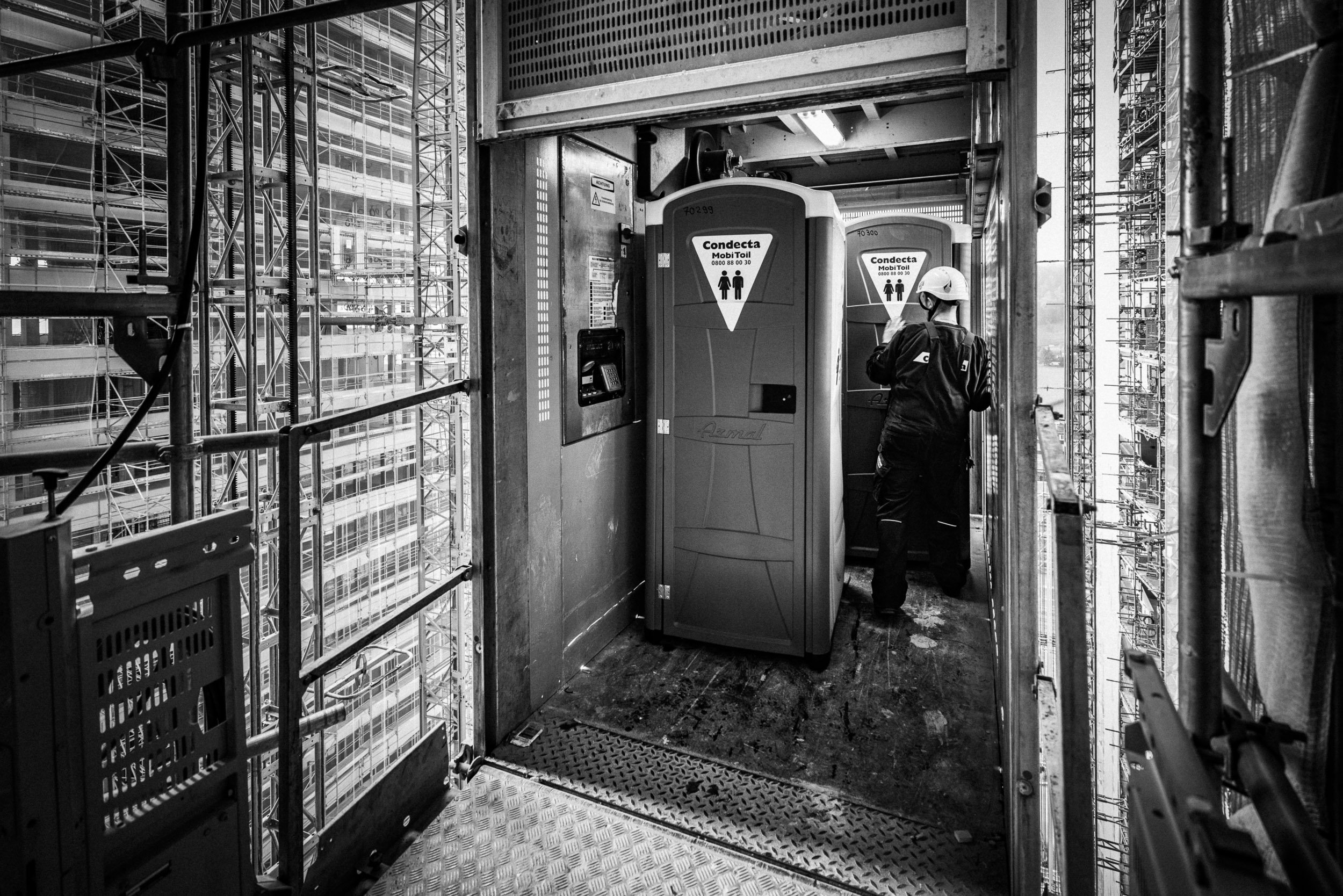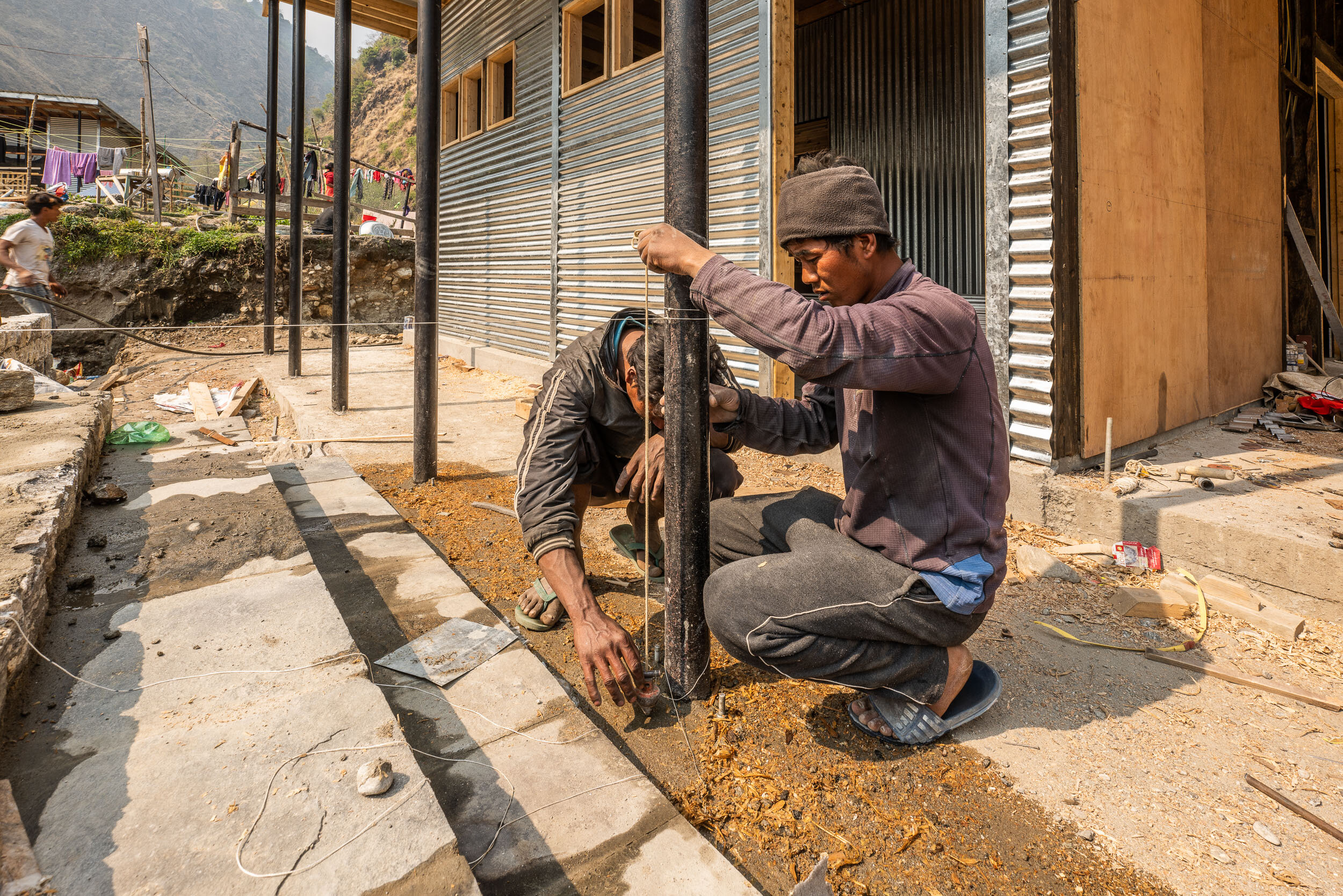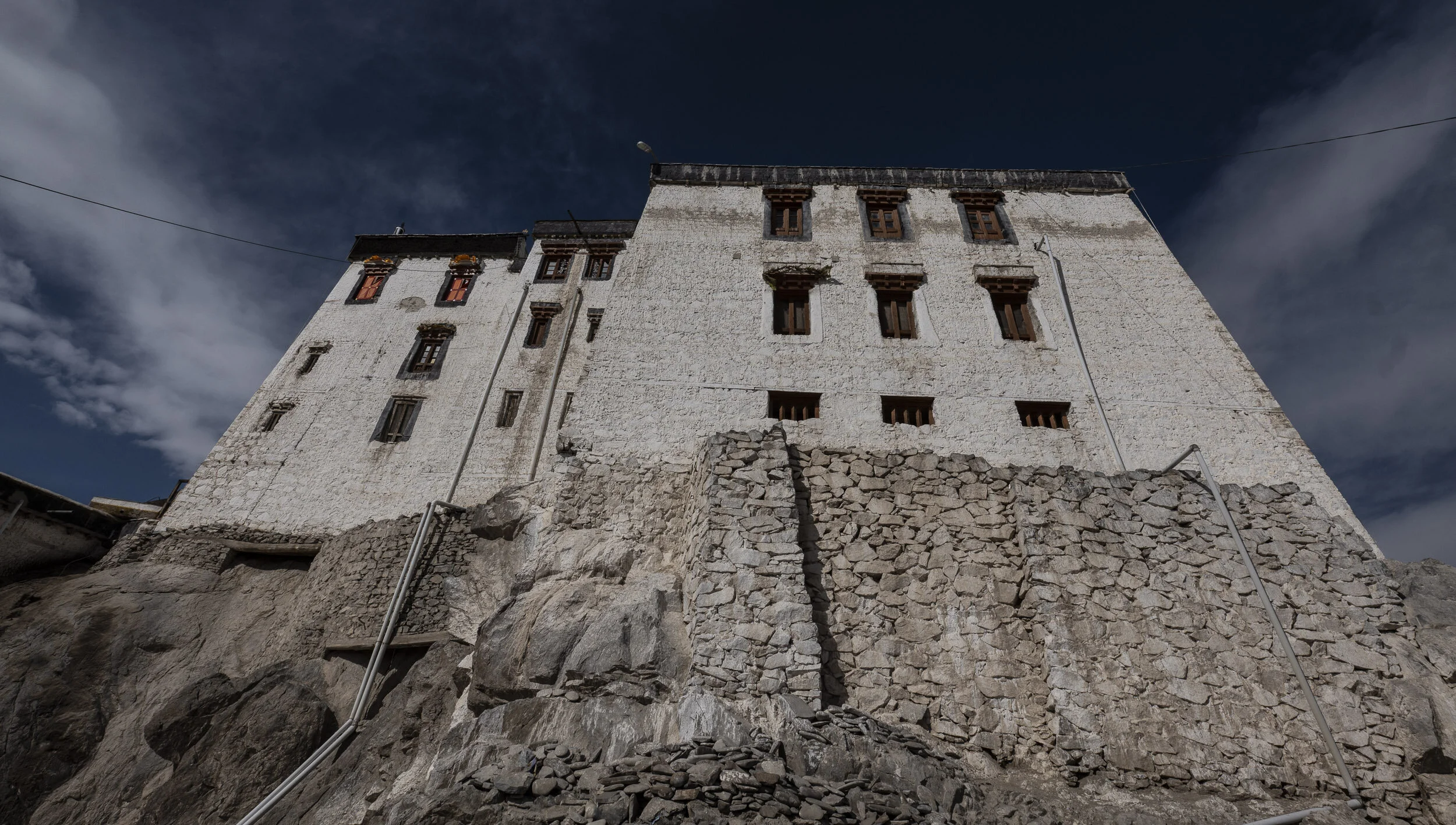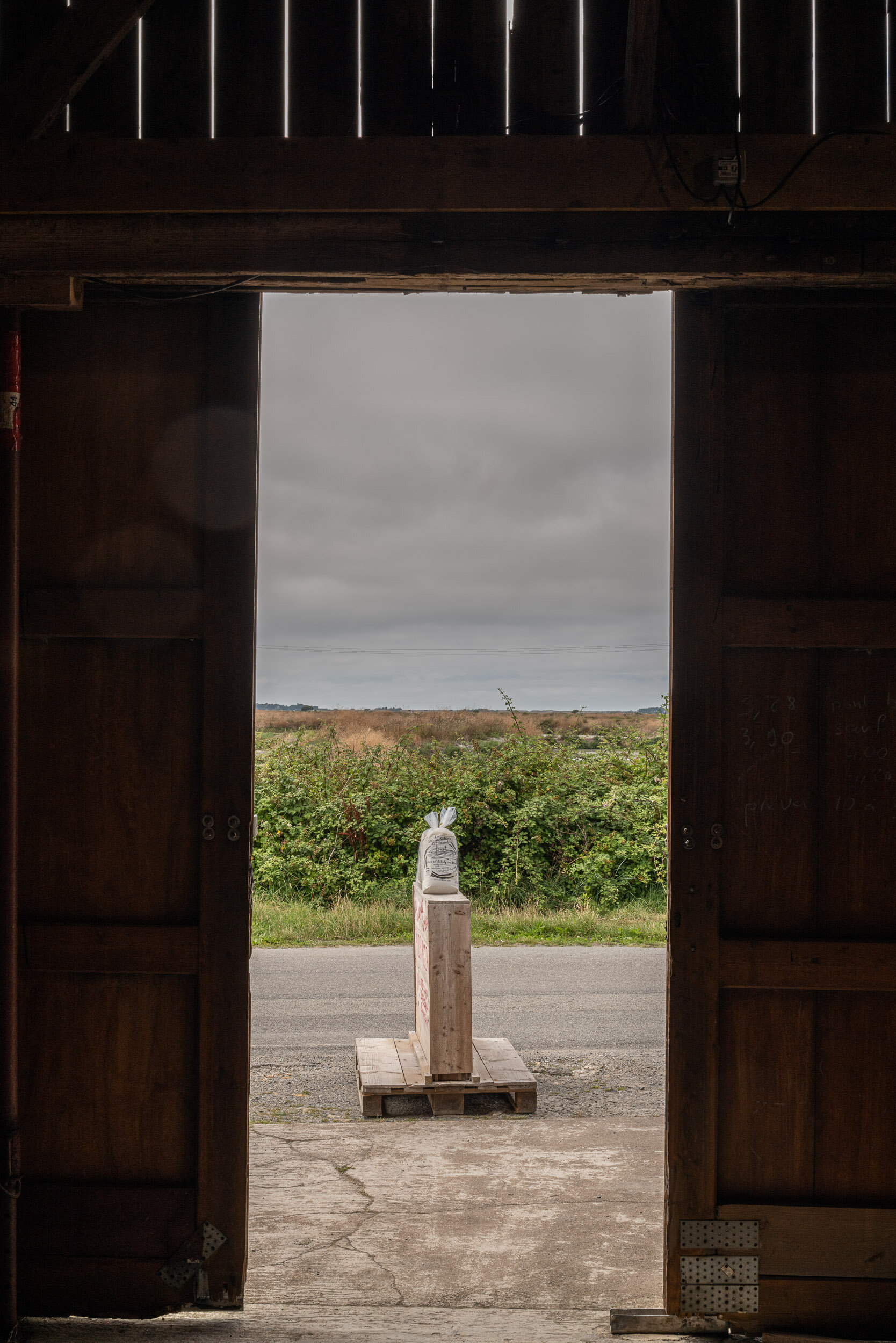No more war
Silent memorials in Normandy remind us of the madness of war. Their message is more important than ever.
Client
freelance work
They stand there as silent witnesses against war – bunkers, landing platforms, military cemeteries. On the Normandy coast for around 80 years. They are memorials that remind us of the insanity of war. The most famous of these symbols is probably the bunker at Saint Marguerite-sur-Mer. During the Second World War, it was located above the cliffs. Due to ongoing erosion, there was a danger that it would one day fall from the cliff. In 1994, it was demolished from above the cliff to the beach in a controlled explosion. Gravity rotated it 90 degrees as it fell, and in this position it became embedded in the beach. I was there for two days to photograph it at different times of day and in different lighting conditions. I noticed the rusty metal reinforcements. Like scars, they run through the concrete and tell us in their own way that war always leaves wounds and scars. There are no winners in a war, only losers.
The remains of the landing platforms come from the historic Mullberry Harbor, built by the Allies in Arromanches-les-Bains. This artificial harbor and other identically constructed harbors played a crucial role in supplying troops after the Normandy landings. The structure consisted of huge concrete blocks, called caissons, sunk into the sea to create a protected harbor facility. Floating roads, called whale bridges, connected the ships to land and enabled the transport of vehicles and goods. These whale bridges were prefabricated in Great Britain in utmost secrecy, towed in sections across the English Channel, and assembled on site in Arromanches-les-Bains. Immediately after D-Day, on June 6, 1944, the ships set sail from Great Britain with the whale bridge components, and the first parts were assembled in Normandy as early as June 7, 1944. Within a few days, Mulberry B, the name of the artificial harbor, was operational. However, on June 19, 1944, it was severely damaged by a storm. Nevertheless, it remained in operation until October 1944. Hundreds of thousands of tons of material and many soldiers were brought ashore here.
As we continued driving, we discovered a painted bunker with a dove of peace, a rainbow, and colorful balloons, reminding us that peace is one of the highest goods.
I edited the images in this series – sometimes gently, sometimes intensely. Always with the goal of making these memorials as powerful as possible. Their message to us is more important than ever.
Photo reportage with analogue character
Implementation of a photo reportage in analogue style
Client
Condecta AG, Winterthur
There are sometimes photographic subjects that really call for special image processing. This was the case with the photo reportage about MobiToils from the company Condecta: small, portable toilets that are placed on large construction sites in high-rise buildings. Because when a construction worker is working on the 16th floor of a high-rise, there is no toilet in the building, no elevator, and in some cases not even a staircase. Therefore, the company Condecta distributes small, portable toilets across the various floors. When three high-rise buildings are being built at once, that's quite a lot of toilets, which then have to be constantly emptied and cleaned by employees. Everything has to be done quickly, and it's a tough world on the construction site.
That's why I've prepared a small series of images with an analog look – fitting the theme, so to speak: black and white with vignetting and film grain. The good old analog days were beautiful after all ;-).
As always, I shot digitally in color with the Leica SL2. Everything had to be done quickly, so I shot with the two excellent SL zooms—the SL 16-35 and the SL 24-90mm.
Camargue salt
Some impressions from a salt production plant in the Camargue, taken during a Leica photography workshop
Client
Images taken during a Leica workshop in the Camargue
Salt doesn't seem to let me go. After the major photo reportage with the Leica SL2 in Brittany, I was drawn back to France and the salt. This time, however, to the Camargue. As part of the photo festival in Arles, I organized a photography workshop for Leica together with my friend Christian Habermeier . In the afternoon, we spent some time with the participants in a salt production facility. The window of time was short, but we managed to get a few shots that I'd like to share here. The images were shot with the Leica S3 – a camera that delivers data of a quality that never ceases to amaze me.
And no – the seagulls are not airbrushed in ;-).
Nepal
Photos from the projects of Himalayan Life , a Swiss-Canadian NGO that operates in various locations in Nepal and does great work.
Client
Himalayan Life, Switzerland / Canada
In April 2018, I was privileged to photograph the opening of a school in the earthquake-damaged Yangri Valley for Himalayan Life . On another trip, I visited most of Himalayan Life's projects with Ursula and my friends Christian Habermeier and Denise Wiltse. We created film and photo material for this wonderful NGO's communication channels:
In Pokhara
In Pokhara, Himalayan Life has built Nepal's only PET recycling facility. This is done to create jobs for street boys and thus open up future prospects for them. The boys also have the opportunity to complete an apprenticeship. Himalayan Life also offers programs in Pokhara where kids can play together and participate in sports.
Yangri
The entire Yangri Valley was severely affected by the 2015 earthquake in the Kathmandu region. Many people died and countless others were left homeless. In the initial phase, Himalayan Life helped rebuild homes and infrastructure. But education is one of the key factors for making a long-term impact. Therefore, in 2018, Himalayan Life opened a school in the valley's remotest village, where children from Yangri and the surrounding mountain villages receive an education. The entire community supports this project. Tragically, the school was virtually completely destroyed by a spring tide on the night of June 14-15, 2021. Parents begged the teachers to stay. To contribute to the reconstruction, we launched the 750_Yangri project, and we are delighted that the school's reconstruction is almost 100% funded. You can learn more about Yangri and Himalayan Life's commitment to this beautiful valley in our film "Transformation."
Chitwan
Chitwan is located in the very south of Nepal, and with its tropical climate, it doesn't necessarily fit the usual image we have of Nepal. Himalayan Life also offers many sports and social programs here. The floorball game in the jungle on the sandy ground was definitely one of the greatest sporting events of my life.
Ladakh
Many Nepalis live in exile in Ladakh, northern India. Their parents work in difficult construction conditions. They move like nomads from construction site to construction site, often living in tents, even though temperatures often drop into the double-digit minus range in winter. To ensure the children receive an education, Himalayan Life has opened a home where they can be. They not only receive food and a place to sleep, but also experience respect and love.
A day in the hospital
A day at the Cantonal Hospital Frauenfeld - a photo report for the Swiss Professional Association of Nurses SBK-ASI
Client
Swiss Professional Association of Nurses SBK - ASI
On behalf of the SBK (Social Disability Insurance Fund), I was able to photograph a day at the Frauenfeld Cantonal Hospital, naturally respecting the privacy of staff and patients. I edited some of the photos in black and white. Nowhere are life and death as close together as in a hospital. This day was correspondingly emotional for me, and my respect for the nursing staff—already very high—increased even further. They are true heroes and deserve our utmost respect.
Guérande salt
Reportage about the salt farmers of Guérande in northwest France.
The salt of the sea
They're all freedom-loving. And a bit anarchistic. The salt farmers of Guérande in northwestern France. Salt used to be white gold. So it's no surprise that the beginnings of salt production in Brittany date back to the Neolithic period. The approximately 2,000-hectare salt marshes of Guérande are the largest of their kind. Around 300 salt farmers, known locally as "paludiers" (from the Latin word "palus," meaning marsh), cultivate the plots. Most of them belong to a cooperative; only a handful market the salt themselves. Pascal and Delphine market the salt themselves (see also their website www.sel2guerande.com ).
With a deft hand, Pascal wields the "las," a wooden scraper with a very long handle. He uses it to pull the salt that crystallizes at the bottom of the basin out of the water. It's all done by hand. No machines. Pascal likes it. This allows him to support himself with minimal overhead. Independent. A little wild and anarchic, in fact. He's his own boss and can organize his working hours himself. The salt harvest itself can only take place in good weather. That's around 40 days a year. In this short period, he and two seasonal workers dredge up to 150 tons of salt from the basins. That's sometimes 4,000 kg per day, which has to be transported by hand from the fields in wheelbarrows. The "normal" salt, the gros sel, has a slightly grayish color because the salt crystals combine with the minerals of the clay in the basins. This makes the white gold somewhat grayish, but even more nutritionally valuable. Each salt miner piles up his salt in a mountain next to his fields. From time to time, the mountain is transported by truck to a storage depot. When it rains, the depot must be covered, otherwise the white gold melts and is lost.
While Pascal and his seasonal workers pull the bulk sel from the basins, Delphine skims the fleur de sel with a deft hand. Unlike regular salt, it crystallizes on the water's surface, has larger crystals, and is somewhat milder. It is the most valuable salt. In upscale restaurants, it is served on the table so that guests can add a special touch to their dishes with the fleur de sel.
Every salt tastes different. Salt can smell clean, musty, or bitter. It can taste mild, sharp, or pungent, like seaweed, clay, or earth. Fleur de Sel de Guérande is highly sought after for its delicate violet scent.
White gold brought wealth to Guérande. This naturally also attracted the attention of the powerful. In 1343, King Philippe VI of Valois secured the salt monopoly by decree and introduced the "gabelle," or salt tax. This, in turn, brought smugglers, the "faux-saunier," into play. They bought salt in Brittany, which was still independent of France at the time, and then resold it in Maine—in France—after "importing" it without paying the salt tax. They risked being sentenced to service on the galleys if they worked unarmed, and the death penalty if they carried weapons. After numerous popular uprisings, the salt tax was finally abolished by the Constituent National Assembly on December 1, 1790.
In the 1960s, the Guérande salt fields declined in importance due to advancing industrialization and the associated rural exodus of young people to larger cities. It was the "babacools," dropouts and hippies, who, in search of a life closer to nature, rediscovered the ancient cultural landscape in the 1970s and revived salt production techniques with the support and knowledge of the elders.
And when you see Pascal with his hat on while packing the salt, he also has a certain "babacool" air about him. With a satisfied smile, he seals bag after bag, knowing that he is his own boss and that the white gold is loyal to him and his family, providing them with everything they need.
All images (except for the drone photos) were taken with the Leica SL2 and the three SL zooms 16–35, 24–90 and 90–280 mm.
Otterealp
Four days on the Otterealp to document the work of an alpine cheese-making couple…
Client
freelance work as part of a test for Fujifilm
To put the new FUJFILM GFX100 through its paces, we spent four days on the Otterealp above Frutigen. We were looking for a setting that offered as many different shooting situations as possible – landscape, reportage, portrait, stills. With Fredy and Lea, passionate mountain farmers and cheesemakers, we found all the photography disciplines. And we met some great people.
